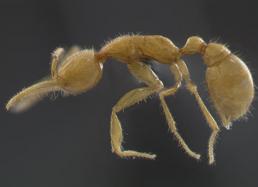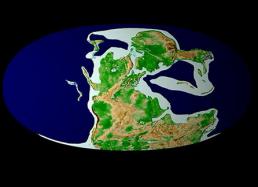Ant Evolution and the Environment
Ants first appeared on the earth between 140 to 168 million years ago, during the Jurassic period—a time when dinosaurs roamed the land and plant life consisted mostly of cone- and spore-bearing species like pines and ferns. Ants were scarce compared to other insects, until flowering plants began to blossom and produce flowers and fruits around 100 million years ago.
Flowering plants provided lots of new food sources and habitats for ants and their close relatives (wasps, hornets, and bees). Over time, different ant species evolved to fill different ecological niches. Some burrowed into the forest floor, while others dwelled in the leaf litter, and still others made their nests in the treetops. Some scavenged for plant fruits, leaves, and seeds, while others preyed on pests that fed on these flowering plants.
Continental Shift & Climate Change
During the time when ants began to diversify, Earth's continents were clumped together into two "supercontinents"—Eurasia and Gondwana. Over time, these two supercontinents began to drift apart and break up into the continents we know today.
As they drifted, these continents experienced climate changes based on their migrating locations on the globe and geological events such as mountain building and volcanic activity. Plant and animal species living on these moving continents either adapted to the changes or eventually became extinct.
Ant Diversity Today
Through all these continental and climatic shifts, ants managed to survive and thrive, eventually colonizing almost every landmass on Earth. Today, scientists have identified more than 12,500 species, but anticipate that there is perhaps another 10,000 species yet to be discovered. The most dominant insect on Earth, ants are so abundant in the tropics alone that their biomass actually outweighs that of all vertebrate animals 2:1!
So what's the secret to their success? The story is contained in their genetic record. Ant DNA testifies to how they've adapted and diversified in response to changes in their climate, geology, and geography over their ancient and enduring history. By studying the genes of ants, scientists can learn more about the traits that make different ant species and other related insects more resilient or susceptible to environmental challenges, which can help researchers forecast possible responses to events such as climate change.




